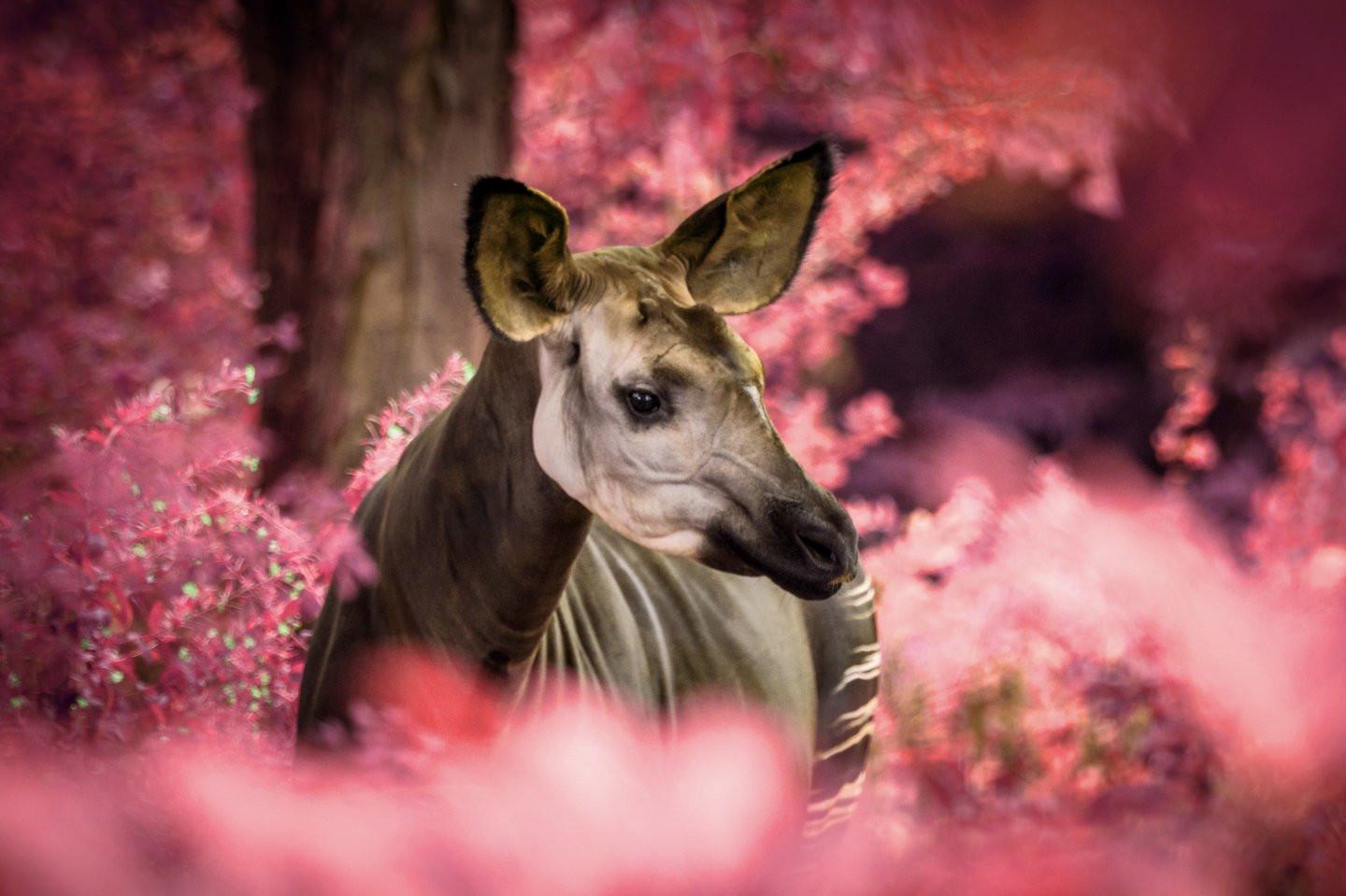
‘Back to Buta’ Okapi Project (Congo)
Endangered species: the okapi
More than a century after the arrival of the very first okapi at the Antwerp Zoo, AZF is making every possible effort to give this elegant and mysterious animal a safe and permanent home. To achieve this, AZF is relying on the same progressive vision as in its bonobo project and its unparalleled knowledge of the species.

Why the okapi?
Our story starts with the arrival of the first okapi at Antwerp ZOO in 1919. The animal was named ‘Buta’ after the capital of the Province of Bas-Uélé, where the okapi occurs in the wild. This is why both the location and the species are so meaningful to the Antwerp Zoo Foundation. Nevertheless, hunting and deforestation have been diminishing the okapi’s chances of survival.
The Foundation is currently writing a rosier script for the okapi in which a green economy and the AZF approach play a leading role.


Going in search together
1. HOTSPOT:
A hotspot for okapis has not been accurately identified yet. Okapis are timid animals. They live in a densely vegetated forest estimated to cover around 300,000 km². This makes it difficult to locate them. AZF employees spent many months traversing the forest in search of these animals. With the aid of the local population and using observation and GPS trackers, they were able to identify the hotspots in a dense forest of 500 km². AZF is actively engaged in defining these hotspots more accurately and concretely.

2. LIVING LANDSCAPE:
In collaboration with local authorities, AZF is defining the scope of operations around the hotspot. Its primary focus is on the protection of the okapi, on the one hand, and on the spatial planning of the demarcated area, on the other.

AZF and the local population decide in mutual consultation which areas they will reallocate as communal forests and which areas will be used as agricultural land, among other things. (AZF calls a land use agreement such as this a ‘Plan Simple D'Aménagement de Terre’ (PSAT)). This is done with the utmost respect for local customs and traditions.

AZF clarifies the ownership of land together with the local authorities. This strengthens the indigenous population’s sense of responsibility towards these areas. In mutual consultation with them and the government, AZF subsequently decides how this land will be used.
3. LAND USE:
AZF gives existing land a new purpose. The communal forest, in particular, plays a crucial role here: it reconciles the conservation of the okapi with a sustainable economy. As the local population can trade in the products they find in the forest, such as honey and caterpillars, there is no longer any need for them to chop down forests.
4. FEED IN THE MUD:
The team of ten experts is literally going ‘back to Buta’
- Entrepreneurs who trade or produce without endangering the okapis’ forest can count on the support of AZF. AZF distributes seeds to farmers to grow or strengthen (new) crops. It also buys harvested crops to make local farming economically viable.
- AZF helps villages on-site to develop a shared vision of the future. The local inhabitants are always the starting point, in which AZF takes into account local traditions in relation to the distribution of power but also pays special attention to the participation of women. The AZF team works with a local development committee elected by the villagers and led by the village chief.
As a studbook keeper, we are extremely proud to keep and protect these beautiful animals in our own, unique manner.
5. COHABITATION:
The okapi and the local population live in harmony in the communal forests. The property rights also enhance the involvement of the community. In a later stage, small-scale okapi tourism can provide additional income.
6. FUTURE-PROOFING:
AZF trains the local population in and around Buta with the aim of safeguarding its sustainable approach in the long term. It provides young Congolese with support to study at local universities, in which AZF’s philosophy plays an important role. By involving the ‘village chief’ and the local authorities as closely as possible in this project, AZF acts as a catalyst in engaging the right people to collaborate on a sustainable long-term solution. The ultimate aim is to create a territory where cohesion between people, animals, and nature is paramount.



Lomako Bonobo (Congo)
Humankind shares 98 per cent of its DNA with the bonobo. Keeping this in mind, it should hardly come as a surprise that AZF takes such a heart-felt interest in the fortune of this intelligent primate. The situation as it stands today unfortunately looks everything but rosy: deforestation and the bush meat trade pose a substantial threat to the very survival of these inspiring animals and their habitat. AZF is doing everything in its power to improve the lives of bonobos.

De Zegge (Geel, Belgium)
The nature reserve De Zegge is a vulnerable paradise for rare species of flora and fauna and one of the very few places in Belgium to contain a unique marsh habitat with peatlands. A bog like this is so important because it retains carbon, thus serving as a beacon in the battle against global warming. De Zegge is, however, under tremendous pressure because its water balance has come under threat. AZF also aims to work towards a harmonious future for people, animals, and nature – not only abroad, but also in its own country.